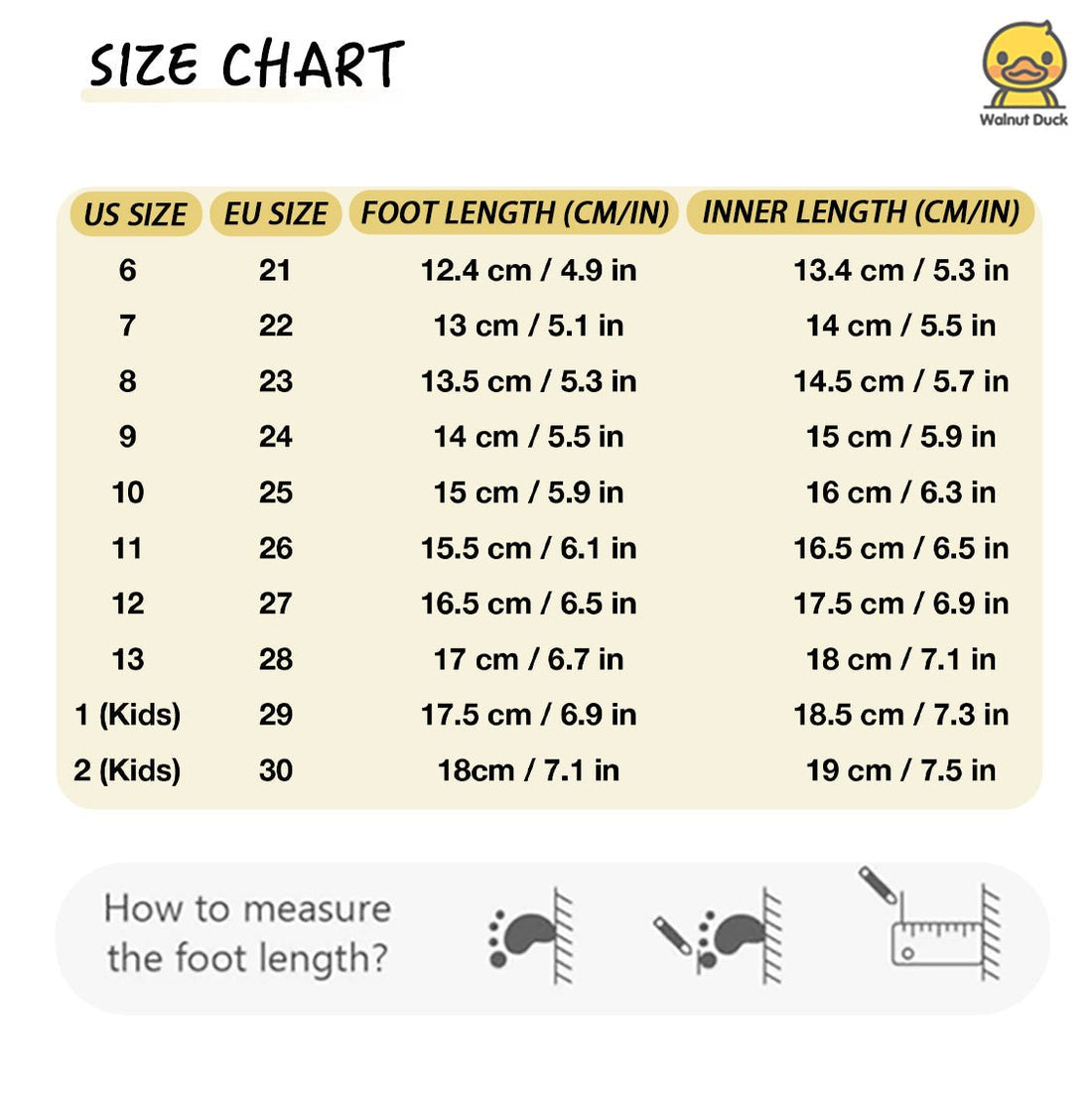
How to Check if Your Child’s Shoes Fit? 3 Expert Methods to Avoid Common Mistakes (With Walnut Duck’s Guide)
Share
Introduction
“Mom, these shoes pinch!”—Your child’s complaint could be a red flag. Studies show 68% of childhood foot issues (like bunions or flat feet) stem from ill-fitting shoes. Yet, kids often hide discomfort for the sake of style. How can parents scientifically determine if shoes truly fit? Walnut Duck’s Pediatric Foot Lab reveals 3 Golden Rules + 2 Hidden Pitfalls to safeguard your child’s every step!
Method 1: Measure “Dynamic Foot Length,” Not Just Static Size
Why It Matters
A child’s foot lengthens by 5%-10% when standing or walking. Relying on age or old shoe sizes often leads to errors due to brand variations.
Step-by-Step Guide
- Timing: Measure in the evening (feet swell slightly after activity).
- Tools: Paper, pen, ruler.
- Measurement:
- Have your child stand evenly on the paper.
- Trace the longest toe (not always the big toe!) and heel, then measure.
Ideal Shoe Space
- Room to Grow: Foot length + 1cm (about an adult thumb’s width).
- Fit Test: Press the shoe’s toe area with your index finger while the child stands. You should feel the toes’ position clearly.
Method 2: Pinch the “Heel,” Don’t Just Ask “Is It Tight?”
Common Parent Mistake
Asking “Does it feel tight?” often yields unreliable answers due to distractions or unclear communication.
Science-Based Checks
- Heel Grip Test: Pinch the shoe’s heel. If you can lift the shoe slightly without the foot slipping out, the fit is secure.
- Side Support: Gently squeeze the shoe’s sides. They should offer firmness to prevent arch collapse (Walnut Duck’s 3D Surround Support Collar).
- Walk Test: Observe your child walking for 5 minutes. Check for heel slippage or excessive creasing.
Method 3: Inspect the “Sole Creases” for Hidden Issues
Soles Tell a Story
After your child removes their shoes, check where the sole creases:
- Healthy Fit: Creases align with the forefoot’s natural bend (matching toe joints).
- Warning Signs:
- Creases near the arch → Shoes are too stiff, restricting movement.
- Random, scattered creases → Shoes are too large, forcing the foot to grip.
2 Shoe-Buying Pitfalls Parents Must Avoid
❌ Pitfall 1: “Buy Two Sizes Up to Last Longer”
- Risk: Oversized shoes force toes to curl, leading to hammertoes or bowed legs.
- Truth: Kids’ feet grow rapidly—remeasure every 3-4 months; replace shoes every 6 months.
❌ Pitfall 2: “Softer Soles = More Comfort”
- Trap: Overly soft soles lack support, increasing arch strain and sprain risks.
- Science Says: Bend the sole—it should flex at the front third (Walnut Duck’s “Golden Flex Zone” design).
